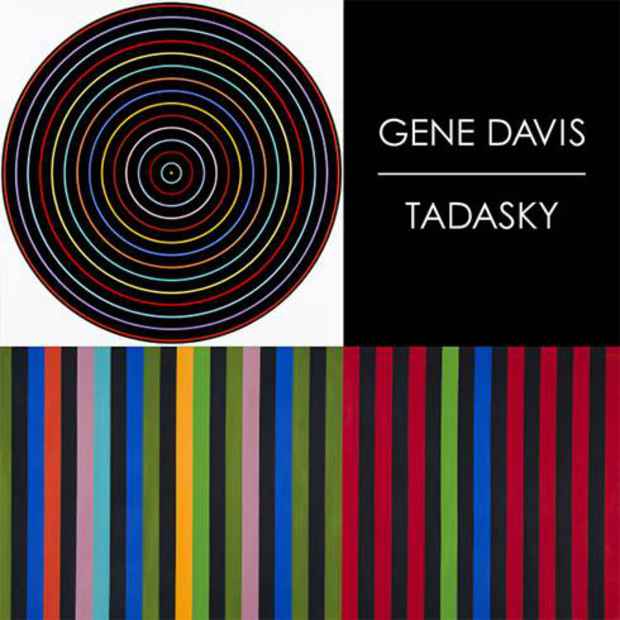“Gene Davis / Tadasky: Time, Dimension, and Color Explored” Exhibition
D. Wigmore Fine Art

This event has ended.
“Gene Davis / Tadasky: Time, Dimension, and Color Explored” features 22 paintings from the 1960s and 1970s. Gene Davis (1920-1985) and Tadasky (b.1935) have previously exhibited together at Cincinnati’s Closson Art Gallery in 1969 and shared their New York dealer, Fischbach Gallery. Exhibiting the paintings of Davis and Tadasky together provides an opportunity to compare working methods, goals, and achievements of two artists from different art circles of the 1960s who both worked exclusively with the stripe (vertical and circular) as a compositional device.
Gene Davis was part of the Washington Color School, which also included Kenneth Noland, Morris Louis, Paul Reed, Thomas Downing, and Howard Mehring. The group was known for staining acrylic paint directly onto raw canvas. Tadasky was part of the international Op art movement, which included artists in Europe, North America, and South America. Op artists examined new discoveries in perception through hard-edged geometry and color. In discussing the different approaches and goals of Davis and Tadasky in their use of the stripe to explore color, the exhibition aims to illuminate why these artists and their respective art groups are regaining an audience today. Considered together, Davis and Tadasky’s work demonstrates the broad experimentation with materials and techniques, as well as the openness to viewer interaction, which characterized and gave such diversity to art of the 1960s.
Gene Davis and Tadasky eschewed formal art training and developed their own technique and tools. Davis was credited by Gerald Nordland for being the first artist in 1958 to use masking tape to achieve clean lines. Faced with a comparable problem, Tadasky’s turntable was an inventive solution to create a hard-edged circle. The economy of each artist’s technique was matched in his compositional choice of the stripe. Neither Davis nor Tadasky followed a color theory, but in each of their styles they found the strict geometric format of the stripe contained and gave structure to their extensive color investigations.
Gene Davis considered the stripe an efficient way to explore unusual color combinations and still achieve balance and harmony in his paintings. Davis soon began to see the stripe as an interval to represent time, whose reading could be manipulated through the width of each stripe. Davis wanted each painting to act “as a world into which one can enter and sort of stroll around visually.” Tadasky uses the stripe as concentric rings to achieve speed and dimension through color patterning and line width. For Tadasky, the framing square format of his paintings is as essential as the concentric circles within it, allowing each painting to act as a means of entry into a transformative space. Like Gene Davis, Tadasky feels each painting is its own world and he strives to make the space, regardless of scale, all-encompassing. Using the stripe, Gene Davis and Tadasky show color’s abundant variety and offer their paintings as environments into which one can escape.
Media
Schedule
from February 20, 2013 to April 20, 2013